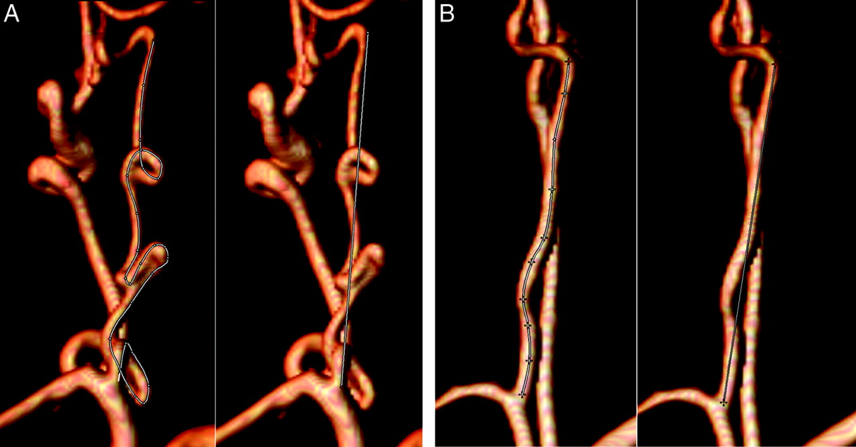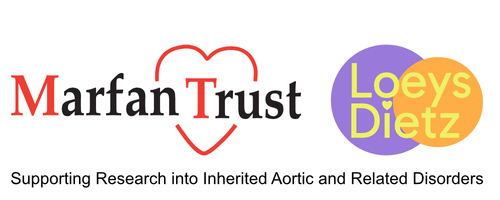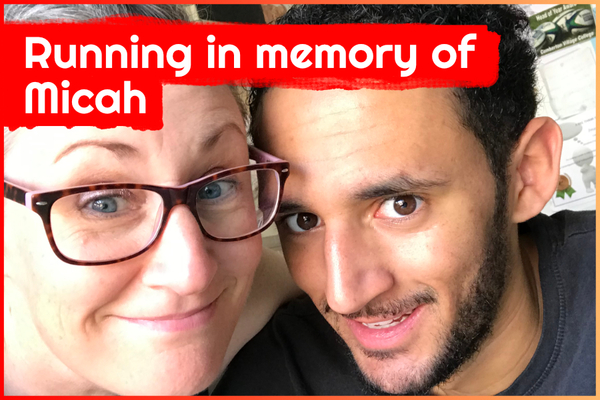Our pulse of life, the aorta, is often centre of attention when considering a diagnosis of Marfan or Loeys-Dietz syndrome. But it’s the twists and turns of the body's other arteries that distinguish these connective cousins. What is arterial tortuosity?
What is Arterial Tortuosity?
Close attention is paid to the aorta (the main blood vessel that carries oxygenated blood away from the heart to all areas of the body) and its size when considering a diagnosis of a connective tissue disorder like Marfan syndrome or Loeys Dietz (LDS). There are other features that may point more specifically to a diagnosis of LDS, one of these being arterial tortuosity.
Put simply, this describes arteries that have abnormal twists and turns. If a diagnosis of LDS is being considered, a CT or MRI scan to examine other blood vessels in the body, not just the aorta, may be indicated.

This striking image published by Morris et al (2011) in Circulation shows vertebral arteries (found in the neck). In image A it is easy to see the twisting and turning of the arteries in an individual with LDS while image B shows the normal course of the vertebral arteries.









